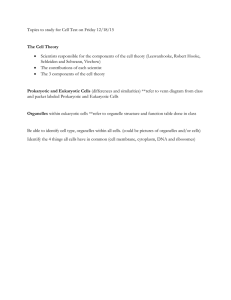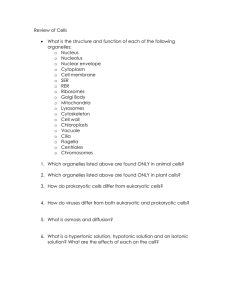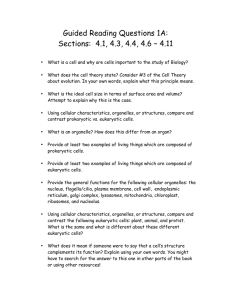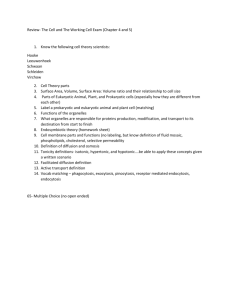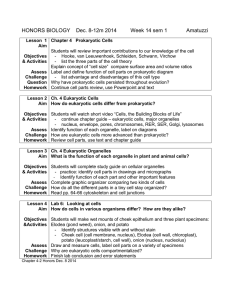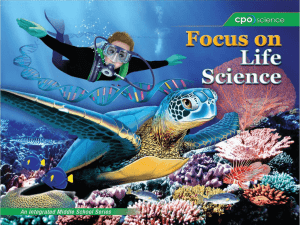Cell Structure & Function Lesson Plan: Plant & Animal Cells
advertisement
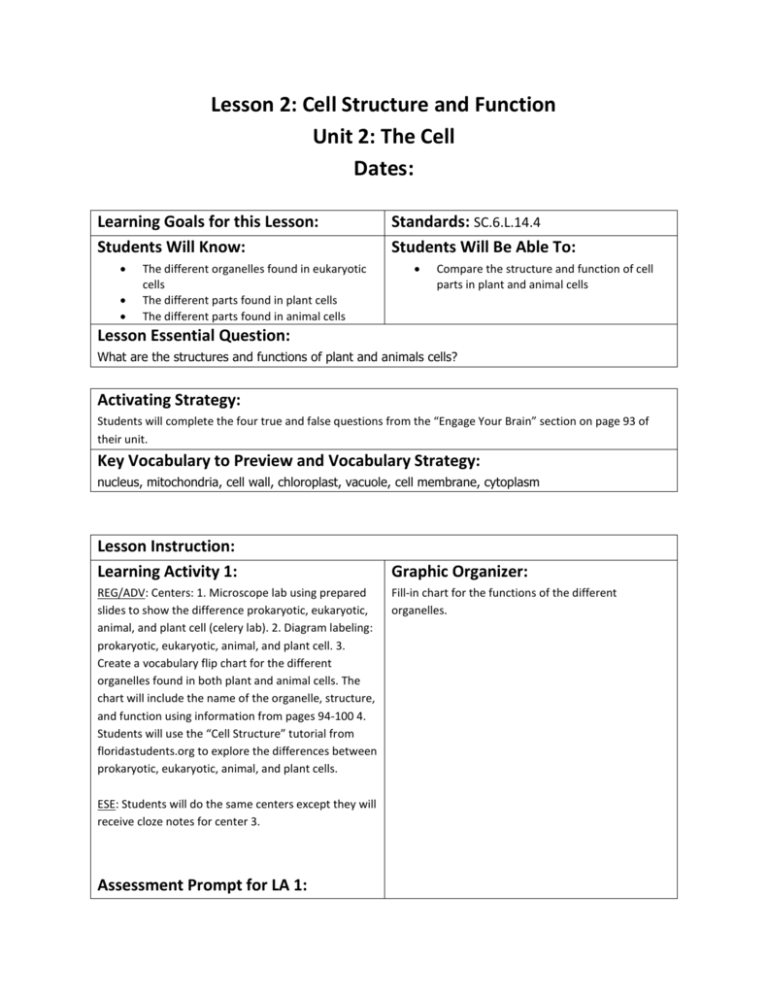
Lesson 2: Cell Structure and Function Unit 2: The Cell Dates: Learning Goals for this Lesson: Students Will Know: The different organelles found in eukaryotic cells The different parts found in plant cells The different parts found in animal cells Standards: SC.6.L.14.4 Students Will Be Able To: Compare the structure and function of cell parts in plant and animal cells Lesson Essential Question: What are the structures and functions of plant and animals cells? Activating Strategy: Students will complete the four true and false questions from the “Engage Your Brain” section on page 93 of their unit. Key Vocabulary to Preview and Vocabulary Strategy: nucleus, mitochondria, cell wall, chloroplast, vacuole, cell membrane, cytoplasm Lesson Instruction: Learning Activity 1: REG/ADV: Centers: 1. Microscope lab using prepared slides to show the difference prokaryotic, eukaryotic, animal, and plant cell (celery lab). 2. Diagram labeling: prokaryotic, eukaryotic, animal, and plant cell. 3. Create a vocabulary flip chart for the different organelles found in both plant and animal cells. The chart will include the name of the organelle, structure, and function using information from pages 94-100 4. Students will use the “Cell Structure” tutorial from floridastudents.org to explore the differences between prokaryotic, eukaryotic, animal, and plant cells. ESE: Students will do the same centers except they will receive cloze notes for center 3. Assessment Prompt for LA 1: Graphic Organizer: Fill-in chart for the functions of the different organelles. REG/ADV/ESE: The teacher will make observations on student work as well as clear up any misconceptions while rotating through the centers Learning Activity 2: Assignment: Cell in a bag page 107 teacher edition Assessment Prompt for LA 2: Learning Activity 3: Assessment Prompt for LA 3: Summarizing Strategy: Organelle crossword puzzle Student: Modification/Accommodation: 1. 2. 3. 4. 5. 6. 7. 8. Seat student near teacher. Stand near student when giving directions/presenting. Provide visual aids/graphic organizers. Ensure oral directions are understood. Allow extra time to complete tasks. Simplify complex written directions. Give test items orally. Provide peer assistance/study groups.
